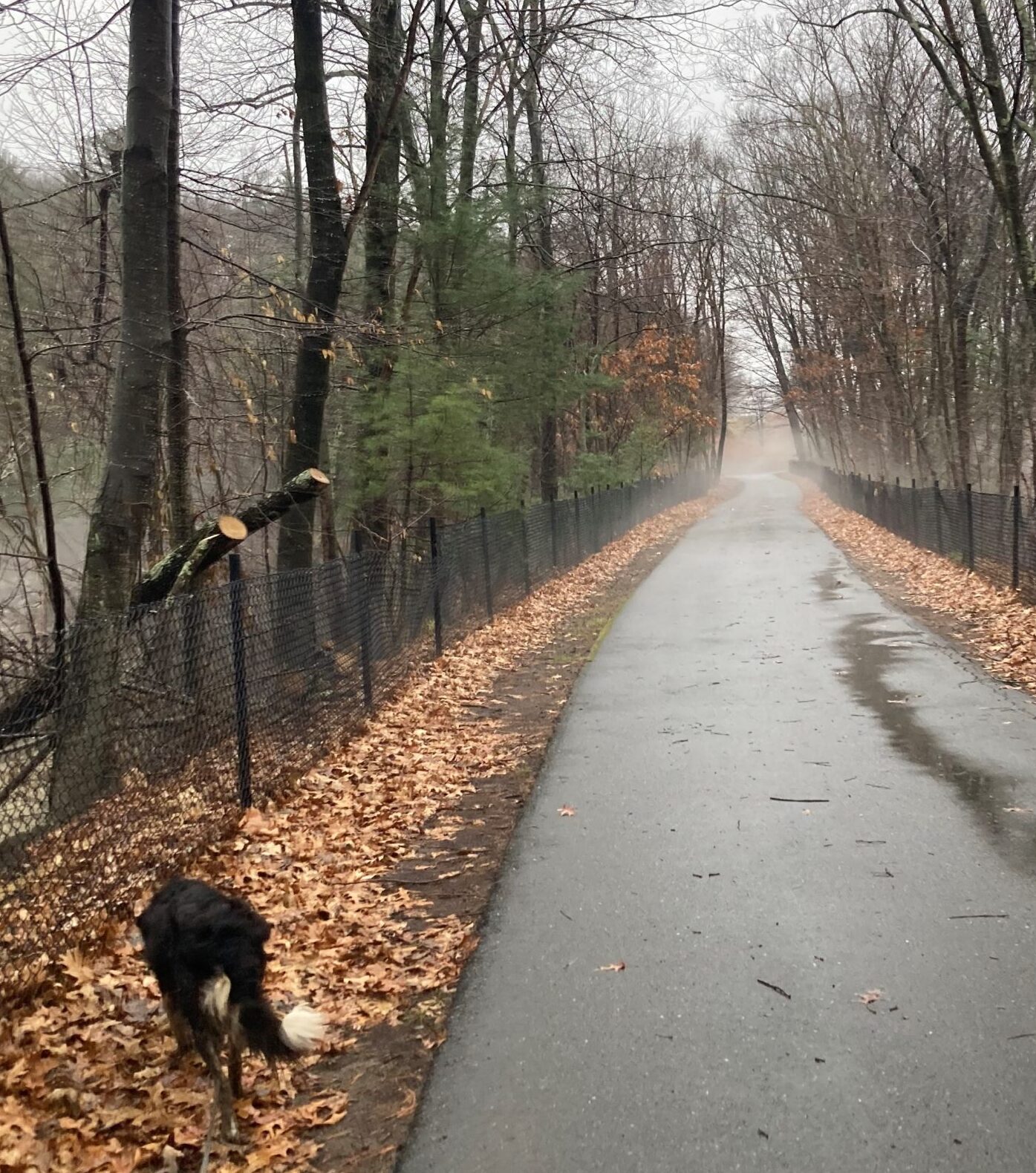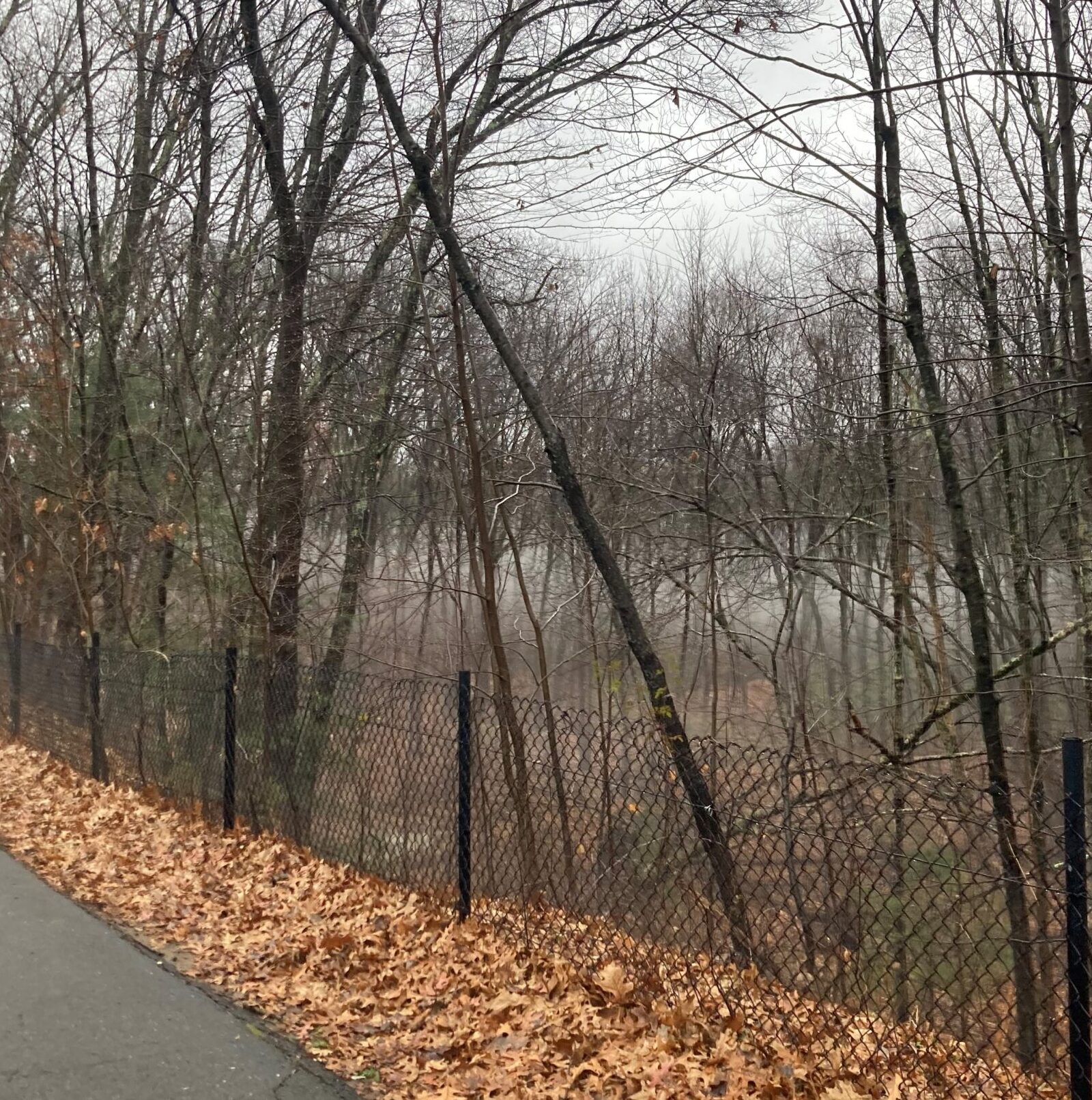Forget not that the earth delights to feel your bare feet and the winds long to play with your hair.
-Khalil Gibran
The other day, not long ago, Waldo and I were walking in the cold, but not too cold, December winter air. It was still and foggy. There was the slightest of breezes, evidenced by the mists moving at a slower-than-walking pace. The sky was overcast and grey and the stark bony beauty of trees reached up into the clouds and bore witness to Mother Nature being asleep, waiting, waiting, ever waiting for warmer times. The temperature was in the mid-forties and I was warmly swathed in my 750-fill parka with hood up and gloves on. Waldo was dancing his way down the rail-trail, apparently oblivious to all except the sticks that lay before him amongst the dead leaves.
Then, within a span of only two or three steps, I felt the air warm by more than 10 degrees! I walked into a bubble of hot air. It was like I stepped into spring while still enveloped in winter. Looking around me, I saw there was still lots of fog and no evidence of more than the slightest breath of wind. Where did this warm air come from? How did it get there without a forceful push to nudge the cold air aside? After a few more steps, the cold returned, although maybe not as cold. Walking on, the same thing happened again and yet again. I’ve never experienced anything like it. As we passed others on the trail, we all exchanged an amazed appreciation of this strange meteorological event.
I’m not a meteorologist (although I can spell it), but I did learn quite a bit when I was doing a lot of flying. Pilots are at the mercy of the weather and, despite all the technology of the twenty-first century, it’s still something to be respected and sometimes avoided at all costs. Pilots have to learn about meteorology in order to stay safe. They have to know when it is the better part of valor to stay on the ground and wait for the improvement that will inevitably come. You learn enough to be able to predict, to some degree, what conditions will be like a few hours in the future – at least on a probabilistic basis.
I know, for example, that the air is not directly heated by the sun. The air is transparent to much of solar radiation – after all, we can see through it, if there are no mists. The ground, on the other hand, absorbs much of it and gets warm because of the sunlight beating on its face. As do we. That’s why, on a clear sunny day, it feels nice and cool to get in some shade. An air mass that lies on a piece of ground for a time, gets warmed, or cooled, by conduction with the ground beneath it. It slowly assumes the temperature of the ground on which it sits. When winds blow, the air mass moves to other ground, carrying along with it the temperature of the ground it left behind – for a time. Eventually, convection will cause intermixing air masses to exchange energy that will equalize their temperatures. But this takes time.
This equalization of temperatures of different air masses occurs at the place where they intermingle, called a front. Warm air that moves into a mass of cold air is forced to rise above it (because, being warmer, it’s lighter) and their meeting place, on the ground, is called a warm front. This movement causes a temperature inversion where the air at altitude has a higher temperature than that below it. This prevents the cold air from rising and puts a lid on whatever is in the cold air, like fog.
What I experienced (Waldo didn’t seem to notice the difference) along with the other adventurous souls out for a walk in nature, apparently was a very slow moving warm front that was gentle enough to displace the cold air we started our walk in, without a breeze strong enough to cause convection that would intermix the airmasses. If there is no mixing, then there can be a clear difference in temperature within a short distance. What I find amazing, though, is that the temperature difference could be so great without creating a strong wind.
I have been accused, in the past, of destroying the enjoyment of the moment by intellectualizing the experience. I heartily disagree. I believe that using our minds to peer into what we observe adds a whole different dimension to what is there before us, just like what happens when using any of our other senses. Standing there, bathed in the moment, opening the pores of my soul, feeling Mother Nature do her thing with all six of my sense organs, my skin, my eyes, my nose, my ears, my tongue and my mind, deepens the appreciation of the magic and beauty that surrounds me. I wouldn’t want to sacrifice any one of them. What greater goal in life can there be than experiencing the human condition in as much breadth, depth and clarity as is possible?
And Mother Nature is truly wondrous, magical and beautiful.



